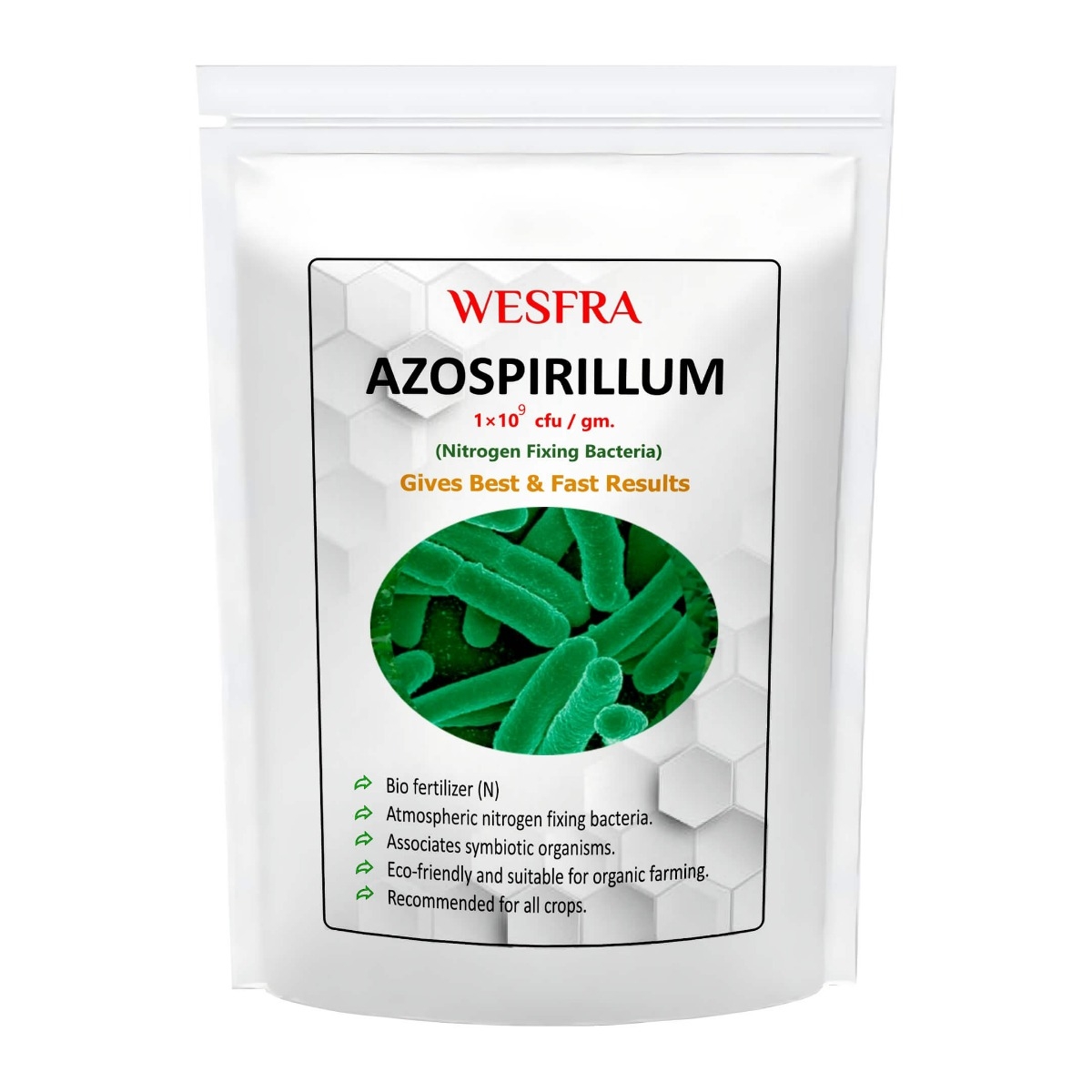
 Search
Search Language
LanguageLanguage
- 0
 Cart
Cart
Azospirillum nitrogen-fixing bio-fertilizer is a beneficial bio-fertilizer that can be applied in various agricultural settings, including large farms, terrace gardens, and home gardening. Its primary role is to enhance nitrogen availability in the soil, promoting healthy plant growth. Here’s how you can apply it in different scenarios:
Soil Application:
Seed Treatment:
Potting Mix:
Top Dressing:
Soil Incorporation:
Foliar Spray (Optional):
This bio-fertilizer ensures improved plant health, better nitrogen fixation, and sustainable growth in agricultural, terrace, and home gardening settings.
A: Azospirillum is a type of bacteria that is known for its ability to fix nitrogen and improve plant growth. Azospirillum biofertilizer is a product that contains live Azospirillum bacteria, which when added to soil can improve the availability of nitrogen to plants and promote their growth.
A: Azospirillum biofertilizer works by establishing a symbiotic relationship with plant roots. The bacteria colonize the roots and produce hormones and enzymes that promote root growth and nutrient uptake. They also fix atmospheric nitrogen into a form that can be used by plants, thereby reducing the need for synthetic nitrogen fertilizers.
A: Azospirillum biofertilizer can improve plant growth and yield, increase nutrient uptake, and reduce the need for synthetic fertilizers. It can also enhance soil health by promoting the growth of other beneficial microorganisms.
A: Azospirillum biofertilizer can be applied by mixing it with soil or by spraying it on plant leaves. The recommended dosage and application method may vary depending on the crop and soil conditions.
A: Yes, Azospirillum biofertilizer is safe for the environment. It is a natural product that contains live bacteria that are found in soil. It does not contain any harmful chemicals and does not have any negative impact on soil or water quality.
A: Yes, Azospirillum biofertilizer can be used on all types of plants including crops, vegetables, fruits, and ornamental plants. However, the recommended dosage and application method may vary depending on the plant species and growth stage.